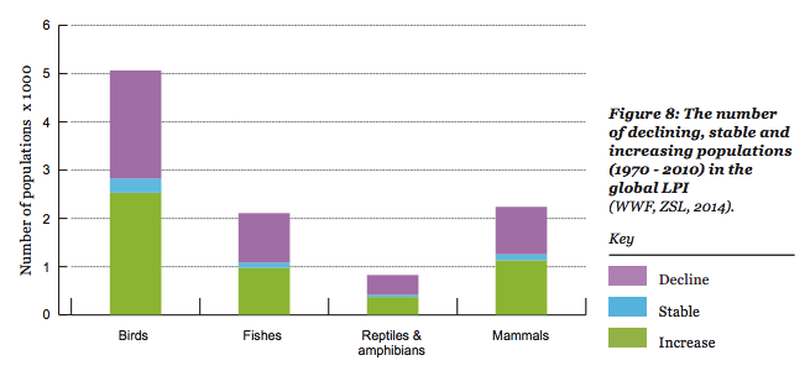Study: World’s wildlife decline 52% since 1970

WILDLIFE WATCHING -- According to a new study, the World Wildlife Fund estimates that the overall number of mammals, birds, reptiles, amphibians and fish declined 52 percent between 1970 and 2010.
Previous surveys released in 2012 pegged the decline at 28 percent, but a closer look at losses in Latin America and Southeast Asia provided even more sobering numbers.
Humans are the root of the problem, where unregulated hunting, overfishing, deforestation, pollution and various forms of habitat destruction are taking their toll.
WWF scientists found that some bird, fish, reptile and mammal populations are increasing, some are stable and some are declining. But the declining populations are declining so sharply that the overall trend is down — and Earth has lost half its wildlife overall.
The bleakest outlook is for freshwater populations — fish, frogs, shorebirds — which have declined 76 percent. Habitat loss and water pollution are the main drivers.
